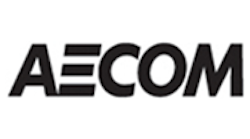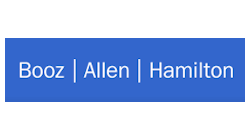Columbia, S.C.
Robert Schneider
Executive Director, Central Midlands Transit (The Comet)
b-schneider_11188282.jpg
Critics of public transportation don’t seem to realize that while transit will never pay for itself, it’s one of the few publicly funded programs that not only generates its own revenues from user fees, but also becomes more efficient the more it’s used. Highways become inefficient when heavily used. A teacher can only handle so many students and law enforcement officer can only patrol so many streets at once. A bus is running down the street, so the more people we can convince to drop the car keys and climb on board, the lower our operational cost per capita will be.
We have focused on three things to combat the negative belief that transit costs aren’t worth the benefits:
The Comet (Central Midlands Transit) places a premium on our image and our identity. We have to be innovative, responsive and genuinely committed to growing our customer base. Everything we do is viewed through the lens of results and the ability to increase transit use. People may not see the value of a smartly designed transit super stops until they see 15 people lined up to board the bus. Our new website is visually cool and designed get route info in two clicks.
We put a face on our riders in the community. We ask riders to tell their employers and family members how important transit is to them. We get out and talk with customers to ask what they think. Then we do what they suggest. We invited the independently created bus riders association to have a spot on our monthly board meeting agenda and serve as a non-voting service standards committee member. We ask them for feedback on shelter locations and bus stop design standards and credit them for the feedback.
We are chasing the 17-25 year-old market. Transit critics are usually people who are in the habit of driving cars. They don’t ride transit and probably never will until they lose access to their car. On the flip-side, we know young adults are forming habits. Research shows they are less likely to have a drivers license at 17, drive fewer miles than any other age group and are a generation raised in a technical world. We want transit to be their habit for years. It’s all part of why we moved away from a government acronym. It’s why our colors are bold. It’s why we are so attentive to college and university atmospheres. It’s why we have booths at job fairs when we aren’t hiring — because we’re selling transit.
We know that by putting “cheeks in seats,” giving riders a voice and attracting a whole new generation of riders we are slowly chipping away at the number of people who don’t see the value of transit. The emphasis isn’t on trying to prove transit is the solution to all problems — we just prove it is the solution for our customers. We define our customers by the millions of trips they take every year, by their presence in the community and by turning the next generation of potential detractors into our champions.
Washington, D.C.
Brian Pickerall
Principal, Booz Allen Hamilton
brian-pickerall-edit-crop_11189890.jpg
Critics of transit project funding can come from a number of directions, with quite varied agendas. Good responses to such criticism must address the agenda in play, and will usually fall within one or more of the following interrelated categories:
- Economy
- Environment
- Energy
- Mobility
There is ample data to support each argument. Organizations like American Public Transportation Association (APTA) and the National Alliance of Public Transportation Advocates (NAPTA) are excellent sources.
Economy:
- Jobs – Both project construction and transit agency operations create jobs. Every $1 billion invested generates 36,000 jobs.
- Businesses – Every dollar invested in public transportation generates $3 in local business sales.
Environment:
- Carbon footprint – Public transportation saves 37 million tons of CO2 emissions every year, equivalent to the electricity generated for 4.9 million households.
Energy:
- Public transportation saves the equivalent of 900,000 auto fill-ups every day, reducing dependence of foreign oil.
- Areas served by public transportation can save 300 gallons of fuel annually in reduced congestion driving.
Mobility:
- Public transportation reduces traffic, congestion, travel times and stress for everyone in a region, even for those that never use the transit system, saving 865 million hours and 450 million gallons of fuel each year.
- Public transportation is a vital link for more than 51 million Americans with disabilities, providing them access to jobs and the rest of the economy.
As further evidence of the value of investment in public transit, public private partnerships are becoming more prevalent as laws and policies allow and encourage it. Today, there are billions of dollars in capital funds looking for infrastructure projects in which to invest, but previously there was no mechanism in place to allow a return on the investment. This resulted in public agencies stretching for enough funds to complete projects, and investors sitting on the sidelines with money.
An example of such a partnership is Fairfax County, Va., where the county government and developer Comstock Partners teamed to build a mixed-use parking structure at the $750 million Reston Station project, part of the $6 billion Silver Line Metro extension to Washington Dulles International Airport. The county is providing $87 million toward construction of a $91.3 million, 2,300-space underground parking deck at the largely underground metro station along Wiehle Avenue. The project also envisions a commuter park-and-ride facility and a transit bus depot. On the nine acres above the station, Comstock is developing a 1.3 million square-foot, mixed-use center that will include 900 luxury apartments, a 200-plus-room hotel, restaurants, and office and retail space. Together, the county and Comstock are creating jobs and revenues, benefitting the entire community.
In short, the project must be viewed as an Investment in the community. The data is there to silence the critics.
Seattle, Wash.
James D. Parsons, AICP
Vice President, AECOM
jim-parsons-aecom_11189889.jpg
For years, the rail transit industry has contended with a host of critics who make a variety of arguments against major capital projects. In recent years, these arguments have become easier to refute by simply citing the many highly successful new rail transit investments. Nevertheless, critics persist with both old and new arguments in cities from Honolulu to Charlotte. However, the industry’s new broader understanding of the relationships between transit investments, land use and economic development and the shaping of future metropolitan-area travel patterns lends a new perspective to the debate.
Twenty or more years ago, the rail transit industry suffered from a track record that saw projects balloon in cost, lengthen in delivery schedule and under perform in terms of forecast and actual ridership. Critics pounced on these problems, dragging up the famous “Don Pickrell Report” of 1990 to argue against investing in transit. The ensuing 10 years, however, saw a vast improvement in our ability to control the scope and cost of new projects, and achieve better-than-expected outcomes. deliver them on time and produce ridership results above forecasts. Much of this new rigor came about through the efforts of the Federal Transit Administration (FTA) and its New Starts project development, design, risk assessment and construction oversight procedures. While people may moan about the time and steps involved in the FTA process, it is hard to argue with the results – today most of our projects are delivered under budget, ahead of schedule and with ridership numbers above forecasts. No other area of major public works investment can cite the recent record – certainly not highway projects. The public has also been impressed, as evidenced by the strong support shown at the ballot box for transit tax measures across the country. Nothing answers the critics better than these successes.
Despite this, critics continue to complain that transit investments have not eased traffic congestion. What they fail to recognize is that transit investments will never “empty the roads.” Transit can ease the rate of growth in roadway congestion but not eliminate it. I am often amused by those who argue that, to be effective, a transit investment should attract everyone else to ride, so that they can drive on uncongested roads. Instead, rail transit investments provide mobility choices and the opportunity for travelers to avoid traffic congestion. Well planned rail transit also provides the infrastructure around which new development can be shaped in ways that reduce auto dependency and vehicle trips in general. One of the biggest benefits of this synergy is the net reduction in vehicle trips – what planners refer to as the “trip not taken” because people can now walk to shop and do other errands. Building more and bigger roads is certainly not the answer to traffic congestion problems when you realize that, in the long run, this leads to larger traffic jams and more congestion.
Another argument critics like to make is that transit still accounts for only a tiny fraction of total daily trips in all but the largest cities. What they fail to recognize is that, in many cities, transit’s role during travel peaks is very significant, often accounting for 20 to more than 50 percent of trips in the critical high-demand corridors. Without transit’s critical role, these cities could not function and certainly not grow. Investments in public transit, and particularly fixed guideway systems (rail and bus rapid transit), are key to the health and quality of life of people in major cities.
Chicago, Ill.
Joe Costello
Executive Director, Northern Illinois Regional Transportation Authority
The future of public transit is at a crossroads. Constrained local, state and federal budgets, combined with capitol shortfalls and increasing rider demand, combine to make it difficult for transit agencies to keep up with the maintenance and replacement of their assets.
In response to this challenge, the Regional Transportation Authority (RTA) helped create Getting America to Work (GATW), a coalition of organizations dedicated to finding innovative solutions to funding America’s transit infrastructure and the $78 billion spending backlog needed to bring the country’s transit systems into a state of good repair. GATW recruited dozens of transit agencies, advocacy groups, councils of government and labor groups in Illinois to support vital investment in transportation. GATW continues raising local and national awareness of capital funding needs, by developing “turnkey” advocacy tools that can be replicated and used by transit supporters nationwide, and encouraging other transit agencies and supporters to join the coalition.
GATW also worked with Congressmen Dan Lipinski (D-IL) and Michael Grimm (R-NY) to develop the first comprehensive Congressional Public Transportation Caucus in Congress. This bipartisan caucus provides a forum for members of Congress to engage in constructive dialogue on the challenges and needs of mass transit agencies across the country as increasing demand and decreasing funding are putting unprecedented pressure on America’s public transportation systems. The caucus held its first event on Sept. 19 and had very good attendance.
Stakeholders agreed that public transportation can’t be caught off guard during the MAP-21 reauthorization and it is imperative that labor, manufacturers, transit systems and technology companies all come together to start discussing what needs to be done to properly position public transportation in the next authorization bill.
We certainly feel the pain of funding challenges in our own region. For that reason, the RTA oversees regional state of good repair (SGR) initiatives, including a regional capital asset condition assessment. Our situation is serious; as of the end of 2011, the SGR backlog for the region was $18.7 billion and the 10-Year capital need for normal capital reinvestment was $12.4 billion, for an overall capital shortfall of $31.1 billion.
COST provides the RTA and the service boards the ability to better assess and prioritize transit capital investments and SGR needs, within the parameters of regional funding and long-term regional goals. COST is a technology driven resource that develops and prioritizes regional capital needs and programs by integrating regional asset inventory data, asset condition monitoring and prioritization criteria into a single investment decision support tool. It provides an independent and objective perspective on capital needs to help better inform regional decision-making and support regional investment prioritization.
The RTA is currently requesting that service boards include COST prioritization analyses as part of annual budget application. Using COST is beneficial to the service boards as it maintains compliance with federal requirements without having to design their own expensive individual prioritization tools. Overall, the tool has fostered collaboration between the transit agencies and has helped point out the important issue of the capital shortfall.
The RTA is pushing to have the Illinois General Assembly mandate that each of the service boards utilize COST in their budget development process and submit their COST developed scenarios on an annual basis to provide greater transparency in the capitalization process.
The RTA continues to take steps to ensure that the region moves toward greater transparency and accountability. We move in this direction while assessing and prioritizing transit capital investments within the parameters of regional funding and long-term strategic objectives.





